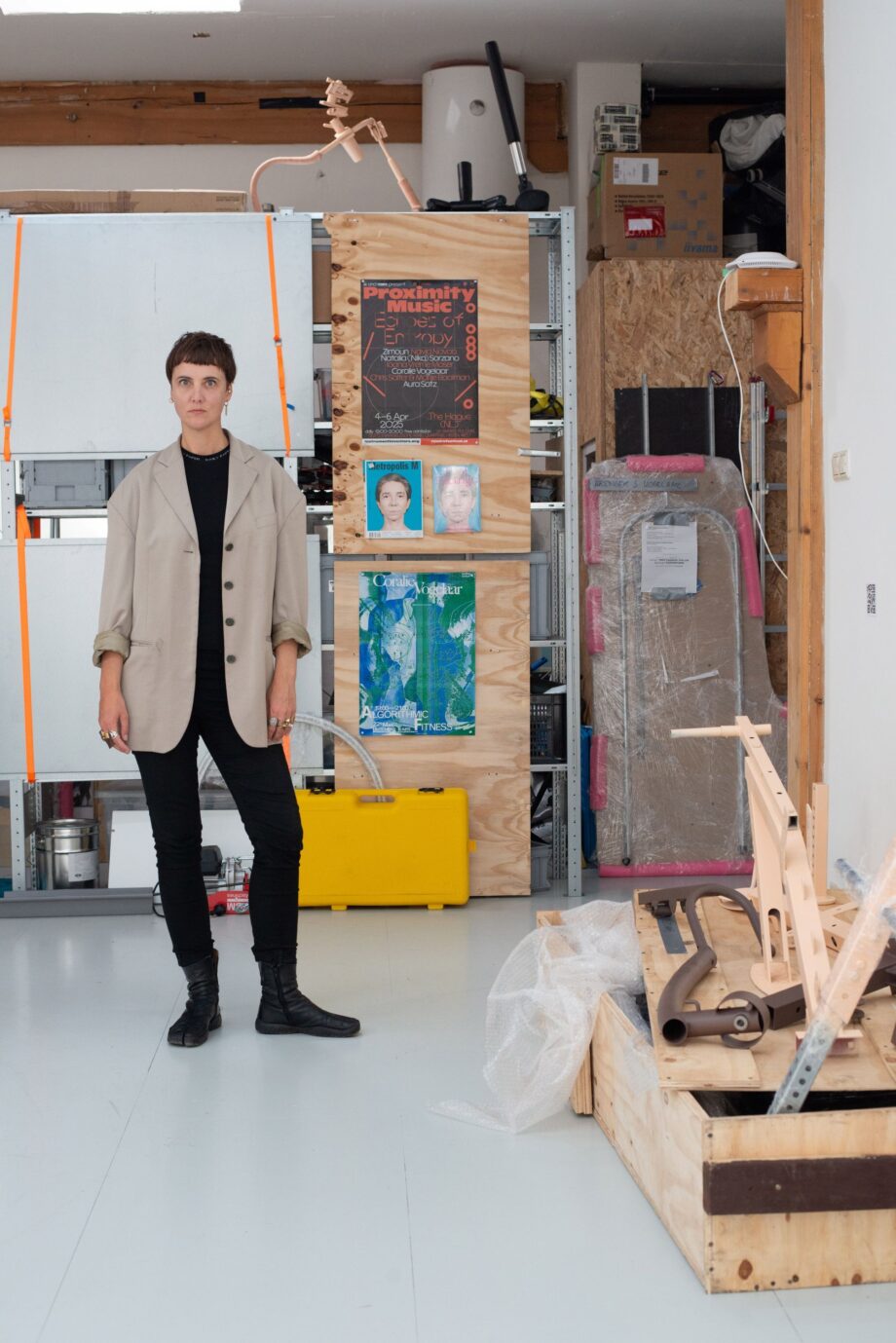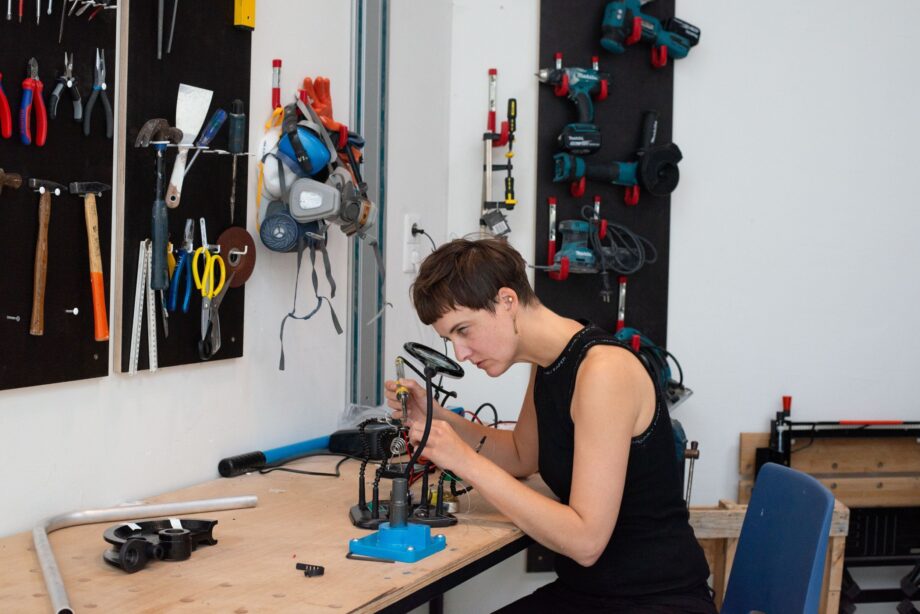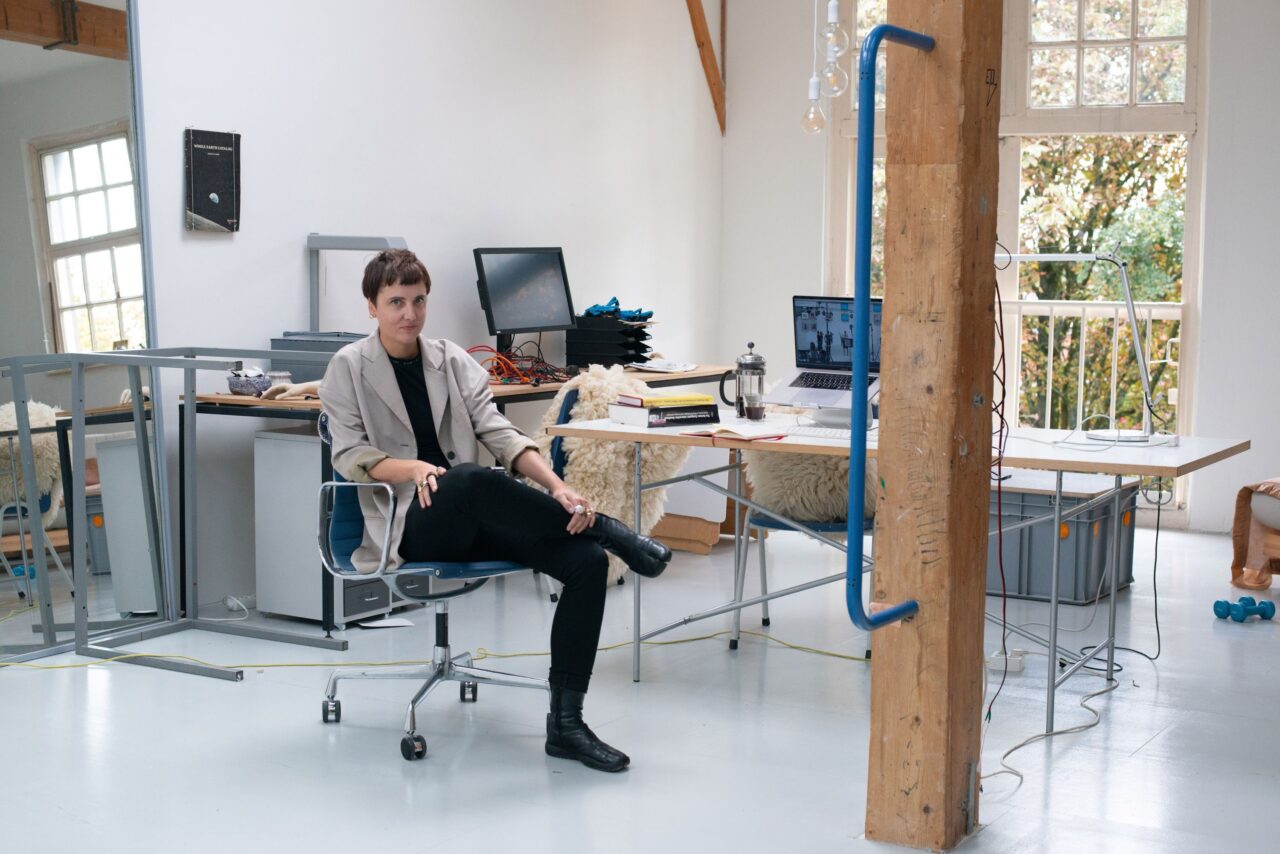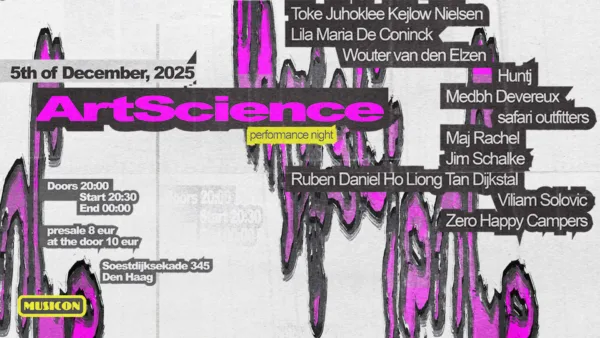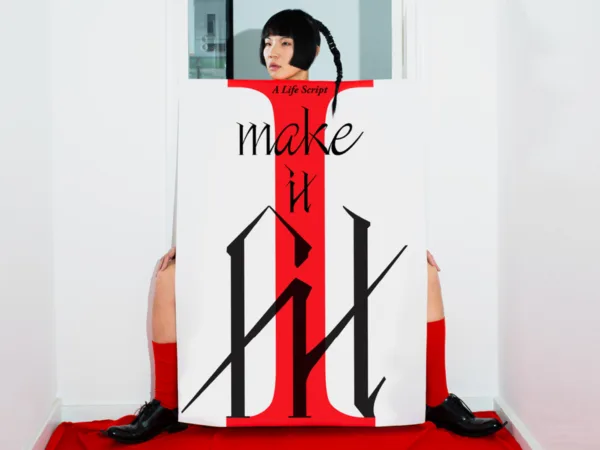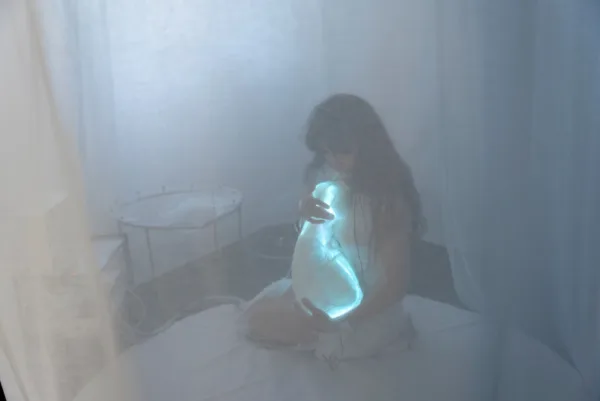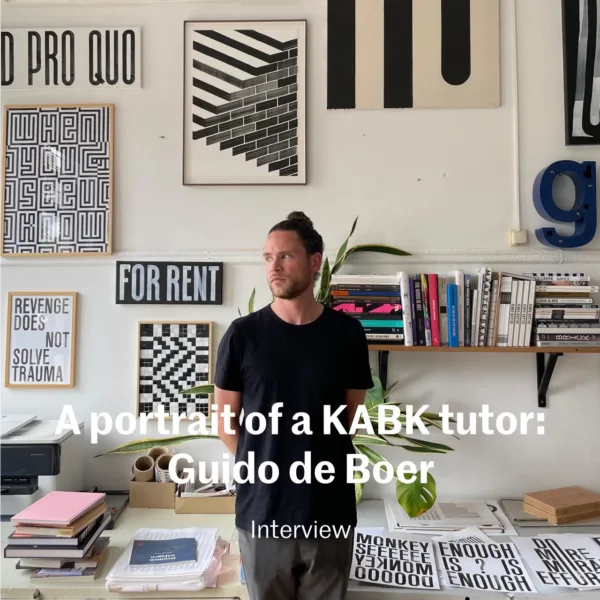In a time when technology is seamlessly intertwined with our bodies, routines and relationships, artist and researcher Coralie Vogelaar searches for the moments when these systems not only support us, but subtly shape and influence us. From her studio in Amsterdam, she creates installations and performances that translate data, movement and algorithmic logic into physical, sensory and sometimes unsettling experiences. Her work questions how technology shapes the way we think, act and even feel, often without us realising it. Alongside her artistic practice, Coralie teaches at the
Her work has been shown internationally at institutions such as the Photographers’ Gallery London, Stedelijk Museum Amsterdam, Science Gallery Dublin, Noorderlicht Festival, Museum für Gestaltung Zürich and FOMU Antwerp. Her performance Emotion Recognition from an Algorithmic Point of View was included in The Most Iconic Works of 40 Years V2 – Lab for the Unstable Media. In 2021, she was nominated for the Prix de Rome.
Your work often explores the relationship between technology and the human being. Where does this begin for you?
For me, it often starts with something concrete and physical, a heart rate monitor, a fitness machine, emotion-recognition software, or even a delivery phone held directly in front of your face. These objects never function on their own; they always exist within larger systems. A fitness machine is part of a culture of performance and self-monitoring, while emotion-recognition interfaces are embedded in structures of control and social steering.
So your work is an analysis of how technology steers us?
Yes, in my current research, partly within the Lectorate 'Music, Education and Society’ at the Royal Conservatoire The Hague (KC), I examine how sound design with ‘smart’ devices influence us together with the ideas of theorist and theatre maker Dick Raaijmakers. He viewed machines as systems that shape our thinking and behaviour. In his essay The Art of Reading Machines, he discusses how machines ‘speak’ to us and influence our actions. I’m especially interested in unconscious forms of influence. We rarely realise, for instance, how sound can direct behaviour. In my work, I investigate why a machine is designed the way it is, I read and feel the machine. I look at what it does to me and how I adjust my behaviour.

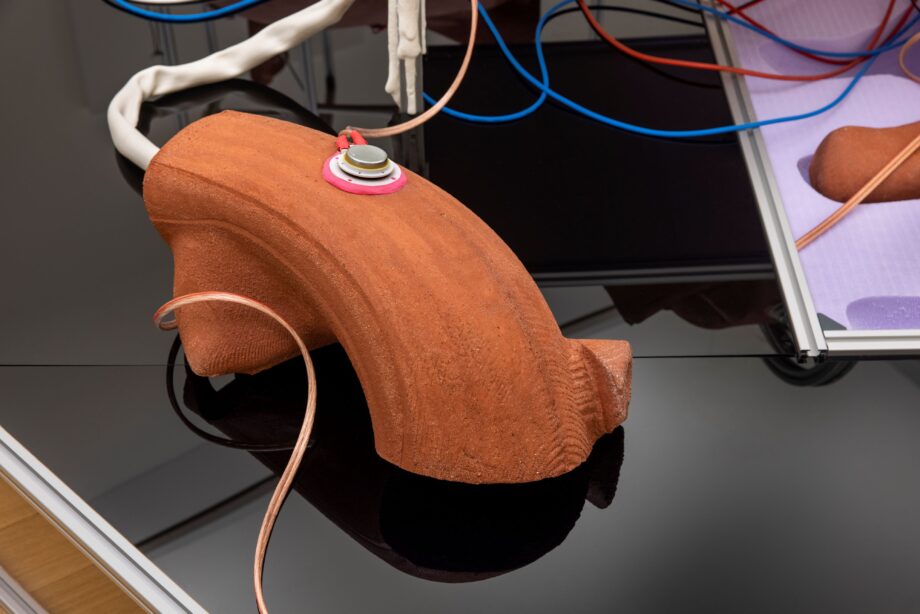
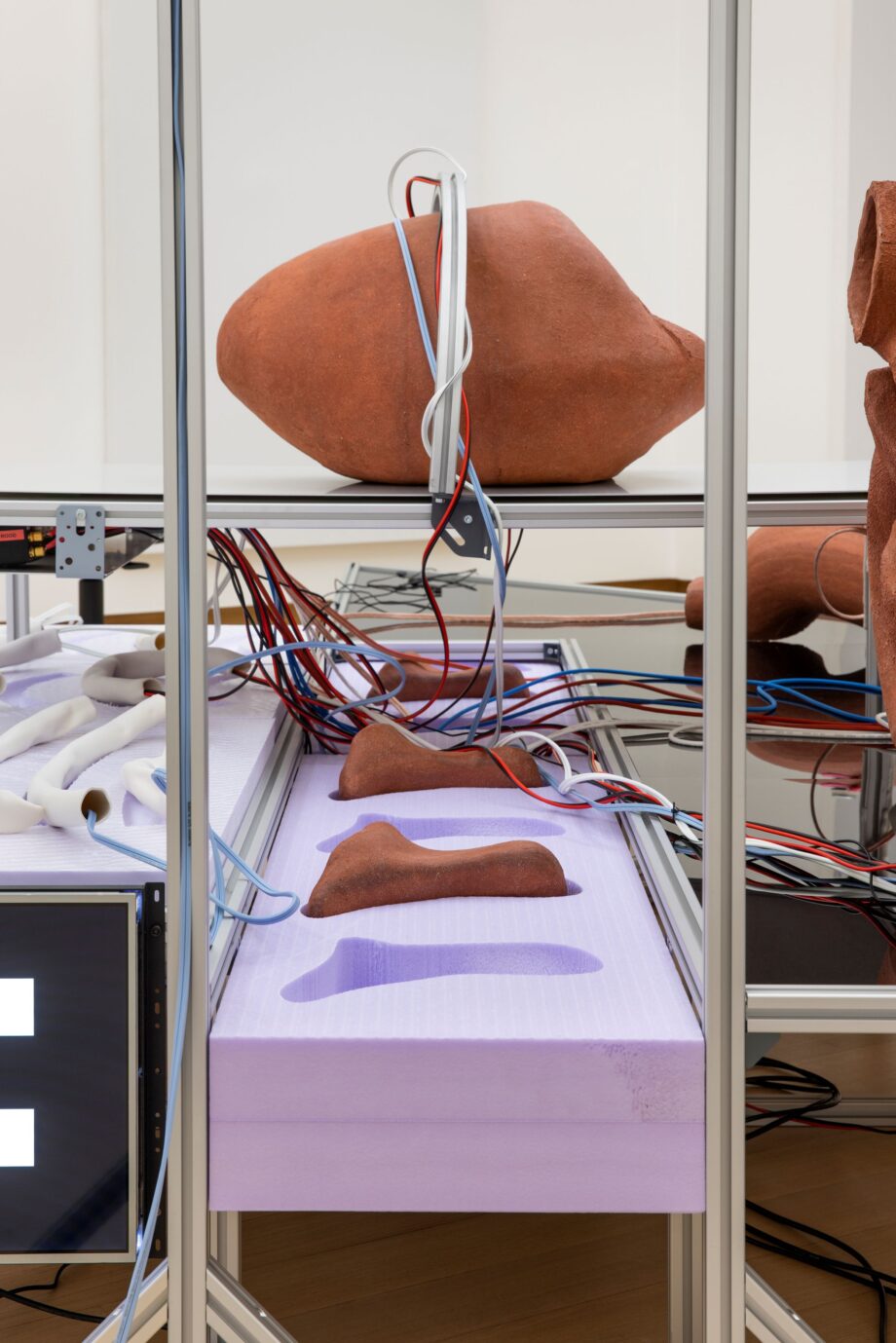
Where else do you find inspiration?
In theatre, particularly in Gestus, the acting technique by Bertolt Brecht in which a single gesture or movement communicates the social relationship and political context of a character. A gesture can reveal something both personal and societal. I’m also inspired by Brecht’s alienation effect, turning something around, disrupting expectations, so that the audience reconsiders what once seemed self-evident. A silent scream, for example, can express emotional turmoil without using language.
You studied graphic design, yet now you create technological installations. How do you look back on that?
Twenty years ago, I studied Graphic Design at ArtEZ in Arnhem. My parents would have preferred me not going to art school, but if I insisted, graphic design was more acceptable than fine art. I grew up in a strict Reformed environment in a small village, and I think that explains my fascination with systems and analysis, I grew up inside a system that responded strongly to emotion.
Graphic design is quite different from what you do now, right?
Perhaps, but during my studies I learned to think in systems and to work with software. I also worked as a graphic designer for some time, but I questioned everything and worked far more conceptually than clients expected. In the end, clients mostly want execution. I found that boring.
What were you like as a student?
Coming from a religious village, entering art school was a huge transition. I felt unprepared and overwhelmed, and I genuinely wondered why they had accepted me. But I loved learning, I absorbed everything.
Your installations look highly technical. How do you acquire the technical knowledge?
By collaborating with others, which is also my advice to students. Collaboration makes the work richer and more enjoyable. My work is essentially research, I want to know how people respond, and that outcome becomes valuable knowledge.

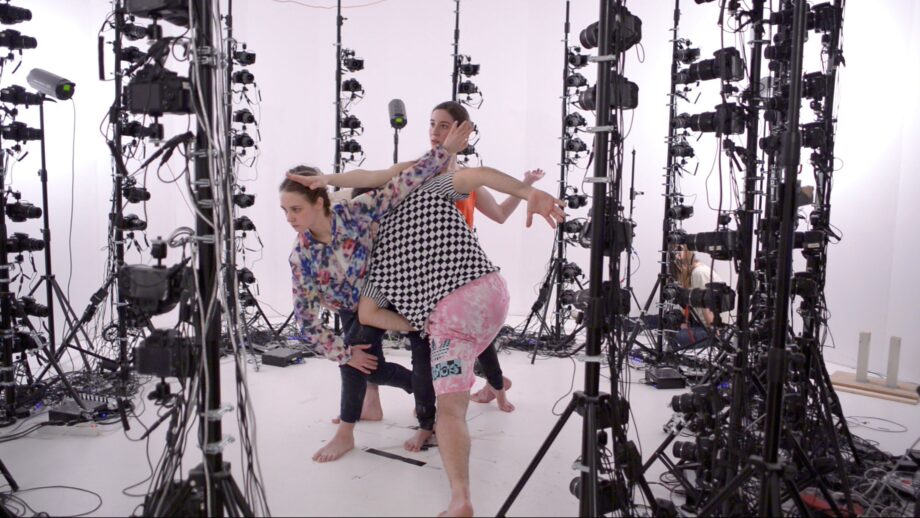
Why does ArtScience suit you so well?
At the ArtScience department, the experience of the work, with all senses, is central. That is also how my work functions. It’s about what the viewer extracts from it, not about what the maker determines in advance. Many programmes focus more on concept transfer: the maker has an idea that is communicated through a work. ArtScience fits me completely; I should have studied it myself. I even think my father would have approved, because of the word Science, haha!
How do you personally view technology and your own use of it?
That’s a difficult question. I sometimes envy people who lived in a time before the internet. But of course, I use it myself, I’m not perfect. It makes my life easier. What I try to do is stay critical, ask questions and raise awareness.
What would you like to share with (future) students?
You’ve done great so far. Be a sponge and absorb as much as you can, explore the workshops. Make things, even if you don’t yet know what it will become.
